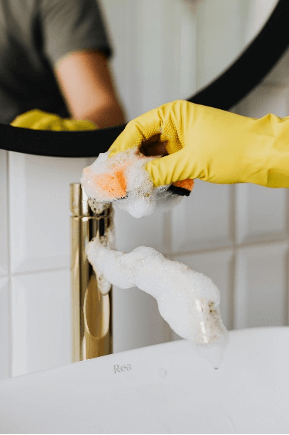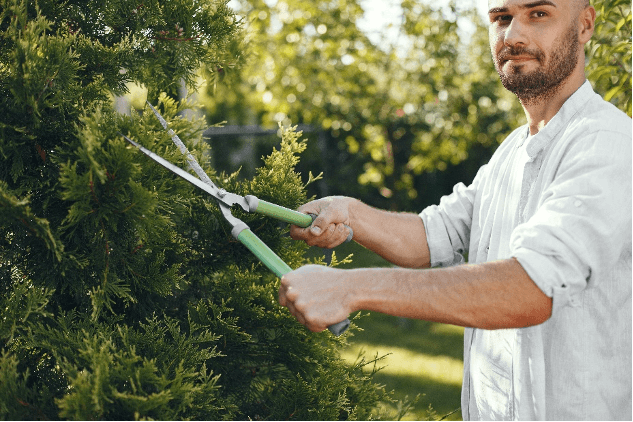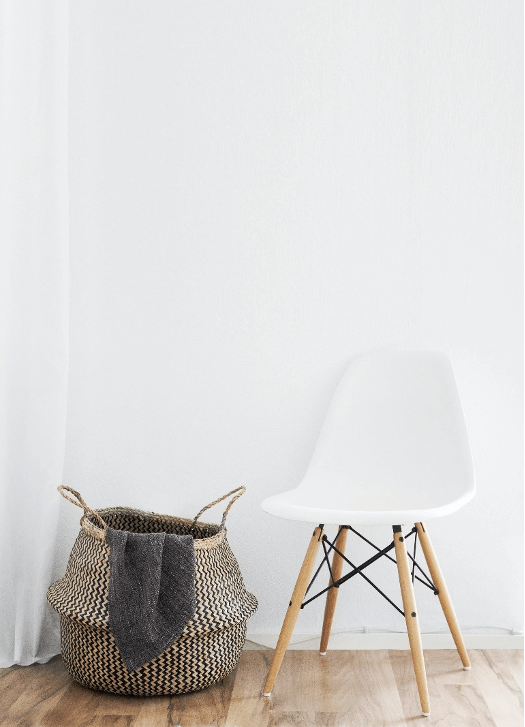In essence, home maintenance is made up of services that you do and get for your shelter. Investment-wise, this could boost the value of your affordable house and lot. Keeping your place tidy also makes it pleasant to live in and to look at. Moreover, it helps extend the lifespan of the structural parts and all other things inside. This lessens the risks for malfunctions or breakages, which means avoiding additional expenses, too.
Perhaps, your main concern is how to do it all or where you should start. Regular upkeep is indeed ideal, but it may take a lot of time. You may procrastinate. You may end up not doing things properly. The struggle is real.
Maintaining your home doesn’t have to be so hard though. You can turn some tasks into habits. Consider professional services as well. To further simplify it, follow the list below as to what you should do on a daily, weekly, monthly, or yearly basis.
Daily

Photo by Kampus Production from Pexels
- Make your bed
This isn’t really a groundbreaking advice. However, it needs to be reiterated as it has benefits aside from having a comfy bed to sleep on at the end of the day. Having this as part of your morning routine can boost your mood. After all, your bed will look good and you know you’ve accomplished something early on. - Wash dishes
It’s always disheartening to see a sink full of unwashed cooking and dining wares. The more you endure it, the less likely you’re going to attend to it. If you do, you won’t likely wash it properly. However, ordering a takeout and dining outside aren’t the solutions. Instead, make it a habit to wash the dishes after each meal. - Wipe kitchen counters and dining table
At least once a day, wipe your placemats and coasters. Then take them back to the drawer or shelf. Clean the tabletop afterwards.
Pick up kitchen waste and wipe spills while waiting for your food to boil or letting it simmer. You may also do this when you’re only waiting for food in the oven.
Upgrade
your home experience with these Trendy
Tableware Must-Haves and Efficient
Home Appliances. suited even for affordable homes!
- Pick up trash
If you chance upon a trash on the floor or in your yard, pick it up and throw it in the trash can. To make trash collection easier, place a trash bin in your yard, kitchen, bathrooms, and bedrooms. - Maintain an organized work desk
If you’re working from home, your desk is among the places you should clean first. In case most of it involves computer work, maintaining a neat desk doesn’t take much effort. You can start by turning off and unplugging your work equipment. Next, return the pen in the holder. Collect and sort documents. Afterwards, place them in the right folders and toss out the trash.
Learn more organizing tips and ideas for your house and lot in Organizing and Styling Ideas for Your Work-From-Home Area
Weekly
- Collect misplaced items and return them to their
proper places.
Get a basket and go to one room. Check the seats, tabletops, drawers, and other areas where there are misplaced things. Gather these things and return them to their respective places. Repeat this in the other rooms in your house and lot. Don’t forget to head over your porch and yard to pick up the items that don’t belong there. - Get rid of leftovers
If you haven’t eaten a leftover within three days, you might as well just throw it away. Collect them in two small trash bags and tie them tightly. This way, they won’t easily smell and spill. - Sort out paper clutter
Check out all the glass bowls, drawers, and folders where you tend to keep receipts, utility bills, and all other paper. Take out the ones you keep on your wallet and bag as well. After compiling them all, sort them out. To avoid criminals from looking at your thrown documents, you can cut them into pieces using scissors or a small shredder. - Change pillowcases, sheets and towels
Your sheets may be stain-free, but they likely absorbed sweat. As such, you should replace them with clean ones at least once a week. The same goes for you pillowcases and towels. If you’re sick though, changing then every few days and after you recover is highly advisable. - Do laundry and press clothes
Turn to an automatic washing machine to clean your dirty clothes. While waiting, you can carry out other household chores or you can eat breakfast. In the afternoon or at night, iron your clothes or fold them accordingly. Arrange them in your closet and dressers afterwards. - Dust display cabinets, shelves, console table,
etc.
With your feather duster and cloths, wipe your display cabinets, shelves, tabletops, and all their contents. While doing so, turn off your electric fan or air conditioner for the meantime. Use an old toothbrush to clean the hard-to-reach areas of your displays. - Wipe shoes and clean shoe rack
A weekly checkup and cleanup will make your footwear last for a long time. You don’t have to wash them unless they’re too filthy. Sweep the dirt on your shoe rack as well. - Vacuum and mop floors
Carpets and rugs cease to feel comfortable when they’re filled with so much dust and hair. You should vacuum them at least once a week. Mopping the floor weekly is also recommended. Don’t forget to wash the doormats, too. - Wipe kitchen backsplash
Most of the time, you’ll only need a wet cloth to get rid of the water stains and food stains on your kitchen backsplashes. For hardened stains, you can spray or pour water over them. Wait for several minutes before wiping them. - Empty trash
Sometimes, all it takes is throwing out trash to get rid of bad odors inside your home. Doing this once or twice a week also helps prevent pest infestation.

Photo by Juan Pablo Serrano Arenas from Pexels
Looking for real estate investment? Check Lessandra’s quality and affordable house and lots.
Monthly
- Remove the expired and empty products on the
fridge, pantry, cupboards, bathroom, medicine cabinet or first-aid kit, and
vanity table.
Do this cleanup before you make your grocery list. Check each food item and personal care product on the said areas. If they’re expired, throw them away. If there are unexpired items you no longer want, you can collect them in a bag or box. You can donate or give these away later on. - Update your emergency kits and first-aid kits
During calamities, you won’t have much time to prepare important tools and supplies. Your emergency kit should have been ready beforehand. Flashlight, whistle, and easy-to-open canned goods are among the emergency kit essentials. Keep a first-aid kit and have a notepad with a list of contact numbers for emergencies as well. Every month, see if there are expired or used up items like batteries or lighters. Update your notepad with new or additional info. - Charge or replace the batteries of your doorbells,
smoke alarms, emergency lights, and other battery-powered items
There have been reports about fires that went undetected early on because the smoke alarms are defective. Don’t let this happen to you. Check the batteries of all battery-powered items in your home. Charge them or replace them with long-lasting ones.
Maintain a safe home space.
Find more home safety suggestions in Safety
at Home: Tips to Prevent Hazards at Home.
- Check out the doors and windows
Does opening or closing them make loud noises? You might want to check the hinges for rust or missing screws. Replace the hinges or screws. You can also re-install the screws.
You should also wipe the glass in your windows. You can use a squeegee and a glass cleaner for this. Clean your blinds or change your curtains every month. - Remove cobwebs
With your ceiling broom, get rid of all cobwebs in your home. You can find these on the corners and ceiling, especially in the rooms and cupboards you rarely use. The underside of furniture and back side of appliances are another hiding spot for spiders. - Clean underneath furniture
Aside from cobwebs, your furniture’s undersides may also have dust. If you have pets, their fur may also be forming a hairball under your bed, chairs, or closet. Vacuum or sweep these regularly. - Get rid of grease buildup
Grease tends to accumulate on the stove, the wall behind it and the hood overhead. You can just use a cloth for removing this. In restaurants, accumulated grease is a fire hazard. At home though, wiping should be enough as you’re not using a lot of oil compared to restaurants. - Wash fixtures
You turn to fixtures like faucets, showerheads, and handheld bidets to clean yourself. However, these parts need some washing, too. You can use a dishwashing liquid for the faucets. As for the showerheads and bidets, spray them with a water and vinegar solution. Cover them with plastic and let the solution sit for 30 minutes before rinsing them.

- Disinfect sinks and toilet bowls
An all-purpose cleaner is good enough to disinfect your sinks and toilet bowls. Use a scrub and toilet brush to clean them respectively. After you’re done, return all the housekeeping tools and chemicals to your storage room. - Clean bathroom walls and floors
Water stains and soap scum abound in your bathrooms. These are difficult to remove when you let them harden. As much as possible, wipe them at least once a month. - Try to detect clogs
Inspect all the sinks in your home. Do they drain water easily? Observe the pipes underneath and behind, too. Do they make loud noises? If you noticed these signs, you may need to unclog your pipes or call a plumber. - Watch out for molds
Go to your kitchen and bathroom to spot possible mold growth. This is usually black, brown, white, green, or a mixture of these. This could be on sinks, fixtures, or pipes. Head over to your external walls, too. Power washing is enough to eliminate mold outdoors. For mold indoors, you may need to scrub them off. Make sure you use a face mask and goggles when dealing with this. - Look for possible signs of pest infestations
When you’re looking for an affordable house and lot for sale, you should be wary of mice, cockroaches or termites. If you’re the homeowner with pest problem, imagine how it will turn off your visitors. More importantly, consider how these pests put you and your home in danger.
Have you seen signs of pests inside your home or in your yard? You can spray insecticides or place traps. If you’ve done all these but the problem still remains, contact a pest control company and schedule an inspection and pest removal service.
Yearly
- Declutter wardrobe
You can apply Marie Kondo’s decluttering advice. You can also sort out according to color. Afterwards, remove the duplicates. Get rid of the ones you no longer want to wear as well. - Inspect power outlets
Do some of the outlets spark when you plug a small appliance? Do you spot smoke stains around the openings? Call an electrician if you notice any issue. - Upkeep furniture
Does your table feel a little wobbly? Does your loveseat smell? These are just some things you should ask yourself when assessing your furniture’s conditions. After inspection, clean or paint them. Apply wood sealant to wooden furniture. Consider also getting upholstery services. - Check out and clean your appliances
Look at each of your appliance. Search for exposed wires in their cords. If they don’t operate properly, contact a technician or have them serviced if they’re still under warranty. Clean what you can clean as well. For instance, you can wipe the doors of your gas range and fridge. You should also check if the filters of your air conditioner is already up for replacement. - Inspect floors, walls, and ceiling
Are there stained or discolored parts? These could either be spills or leaks. Inspect the potential source and fix the issues.
Try knocking or tapping the wooden parts. Do they sound hollow? This could indicate pests or severe damage. Find and resolve the problem early, and replace the damaged parts as needed.
Check your floors for cracked tiles. You should replace them as soon as possible. If you don’t have a stock of the tile or if you don’t have tools, you can cover it for the meantime. Then, call a tile setter to fix the part. - Apply grout or caulk
Your kitchen counters and bathroom floors are the ones that need frequent re-application of caulk and grout. You can also depend on a tile setter to do these for you. Replacing the caulk and grout ensures your tiles will stay in place. This lessens the risks for cracks too. - Paint
Go over your walls inside your home and look for peeling or cracking paint. If you spot these, schedule a painting session. Do the same for your exterior walls. - Clean gutters and drains
Just because you don’t see your gutters doesn’t mean you can forget them. It’s actually even more necessary to clean them. Blocked gutters can cause water buildup in your roof structure. This may further lead to damages. Leaks are the number one sign you should watch out for.
You’ll need a trowel, a ladder, and a hose to clear your gutters. You can hire a roofer to clean this and inspect the roof if you have a fear of heights. Clear blockages in your downspouts and drains too. - Trim plants and trees
Pruning your plants help them stay in good shape. Moreover, this boosts growth in your preferred places.
Tree pruning is also helpful in preventing the branches from breaking your windows or damaging your home in any other way. When trimming trees, focus on the dead branches first. Then turn on the parts that are extending near your home.

Photo by Gustavo Fring from Pexels
- Hire maintenance services
You don’t have to do it all alone even if you’re living by yourself. You can and should hire professional help especially for tasks like inspecting roof, fixing leaky pipes, and maintaining your air conditioners. If you’re also busy or if you prefer to take a break, it’s okay to get cleaning and laundry services, too. - Do a general cleanup
Also known as spring cleaning in the West, this annual general cleanup prompts you to deal with dirt, stains, and trash you might have missed. During this time, you might want to rearrange your furniture or replace your decors.
Additional Home Maintenance Tips
1. Clean as you go.
Shortened as claygo, this practice means picking up your mess and putting things back in their proper places before you get out of the room. After you drink, wash your cup, wipe it, and put it back in the cupboard. After you watch a movie, arrange the throw pillows. Basically, leave a tidy room as it was before you entered. This habit helps prevent you from accumulating clutter.
2. Follow the 2-minute rule in cleaning.
If it can be done within two minutes, then do it. Take emptying the trash as an example. You can also wipe spill within that time. Dusting your coffee table, arranging your shoes, and picking up items on your seats or bed are other chores you can do in no time. Limit the number of two-minute tasks you do in your busy days though. Otherwise, you’re just procrastinating and trying to accomplish something easy.
3. Set up systems for easier cleanup.

Photo by Sara Dorweiler from Unsplash
This can be as simple as putting laundry baskets in every bedroom or having a shoe rack near your doorway. For your paper clutter, categorize them and sort them into file folders or envelopes after printing or receiving them.
For appealing laundry baskets, you can get handwoven ones like those from Handicraft Express Ph. As for folders or envelopes, go for plastic and reusable ones.
4. Designate tasks to family members
More housemates means more contributors to clutter. At the same time, it means you get additional hands to do the household chores. If you live with kids, you can assign light tasks to them depending on their ages. These could be picking up their toys, wiping tabletops and countertops, or bringing their laundry basket during laundry day.
Cleanliness should always start in our homes. One of upsides of having a Lessandra home is its classic and straightforward design making home maintenance more manageable. The quality and affordable house and lot offerings of Lessandra gives you the satisfaction of owning a home and the freedom to style, maintain, and upgrade it just the way you want to.
Lessandra is an affordable house and lot developer. Learn more of the available affordable townhouses for sale as busines and OFW investment opportunity in Townhouses: a Home and a Business Opportunity.
For an array of affordable house and lots for sale in the Philippines, check out Lessandra Project Listing Visit the Lessandra Guides and FAQs section to know more on how to own a house and lot in the Philippines.



